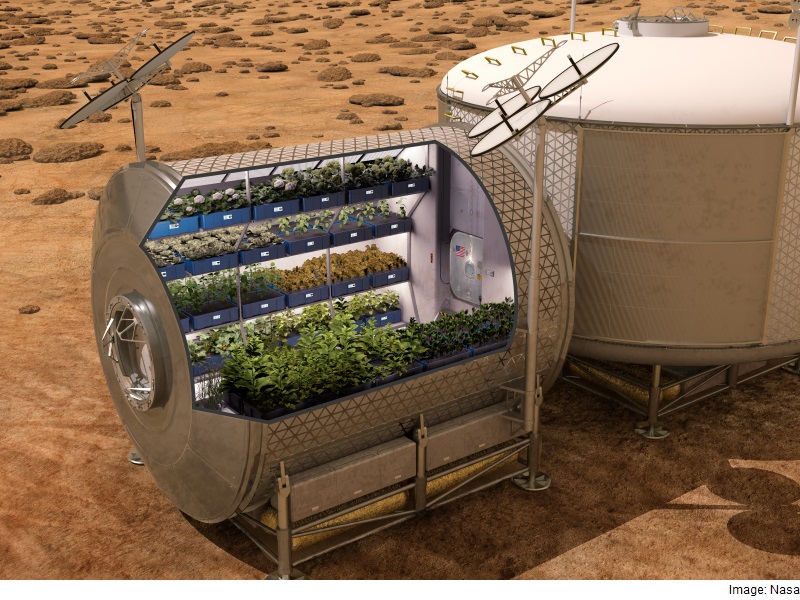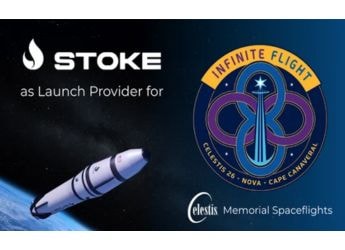- Home
- Science
- Science News
- ISS Astronauts to Sample Leafy Greens Grown on Space Station
ISS Astronauts to Sample Leafy Greens Grown on Space Station

Expedition 44 crew members, including Nasa astronaut Scott Kelly, are ready to sample the fruits of their labour after harvesting a crop of "Outredgeous" red romaine lettuce from the "veggie plant" growth system on the orbiting laboratory.
The astronauts will clean the leafy greens with citric acid-based, food safe sanitizing wipes before consuming them.
They will eat half of the space bounty, setting aside the other half to be packaged and frozen on the station until it can be returned to Earth for scientific analysis.
Fresh foods such as tomatoes, blueberries and red lettuce are a good source of antioxidants.
"Having fresh food like these available in space could have a positive impact on people's moods and also could provide some protection against radiation in space," said Dr. Ray Wheeler, head of advanced life support activities at Nasa's Kennedy Space Centre in Florida.
Nasa's plant experiment, called Veg-01, is being used to study the in-orbit function and performance of the plant growth facility and its rooting "pillows" which contain the seeds.
The first "pillows" were activated, watered and cared for by Expedition 39 flight engineer Steve Swanson in May 2014.
After 33 days of growth, the plants were harvested and returned to Earth in October 2014.
At Nasa's Kennedy Space Center in Florida, the plants underwent food safety analysis.
The second "Veg-01 plant pillows" were activated by Kelly on July 8 and grew again for 33 days before being harvested.
The seeds had been on the station for 15 months before being activated.
The veggie unit features a flat panel light bank that includes red, blue and green LEDs for plant growth and crew observation.
"Using LED lights to grow plants was an idea that originated with Nasa as far back as the late 1990s," Dr. Wheeler noted.
The purple/pinkish hue surrounding the plants is the result of a combination of the red and blue lights which by design emit more light than the green LEDs.
Green LEDS were added so the plants look like edible food rather than weird purple plants.
Besides the nutritional benefits, growing fresh produce in space may also provide a psychological benefit to astronauts.
The farther and longer humans go away from Earth, the greater the need to be able to grow plants for food, atmosphere recycling and psychological benefits.
"I think that plant systems will become important components of any long-duration exploration scenario," informed Dr. Gioia Massa, payload scientist for Veggie system at Kennedy.
The Veggie unit can also be used by astronauts for recreational gardening activities during deeper space missions.
Catch the latest from the Consumer Electronics Show on Gadgets 360, at our CES 2026 hub.
Related Stories
- Samsung Galaxy Unpacked 2025
- ChatGPT
- Redmi Note 14 Pro+
- iPhone 16
- Apple Vision Pro
- Oneplus 12
- OnePlus Nord CE 3 Lite 5G
- iPhone 13
- Xiaomi 14 Pro
- Oppo Find N3
- Tecno Spark Go (2023)
- Realme V30
- Best Phones Under 25000
- Samsung Galaxy S24 Series
- Cryptocurrency
- iQoo 12
- Samsung Galaxy S24 Ultra
- Giottus
- Samsung Galaxy Z Flip 5
- Apple 'Scary Fast'
- Housefull 5
- GoPro Hero 12 Black Review
- Invincible Season 2
- JioGlass
- HD Ready TV
- Laptop Under 50000
- Smartwatch Under 10000
- Latest Mobile Phones
- Compare Phones
- Honor Win RT
- Honor Win
- Xiaomi 17 Ultra Leica Edition
- Xiaomi 17 Ultra
- Huawei Nova 15
- Huawei Nova 15 Pro
- Huawei Nova 15 Ultra
- OnePlus 15R
- Asus ProArt P16
- MacBook Pro 14-inch (M5, 2025)
- OPPO Pad Air 5
- Huawei MatePad 11.5 (2026)
- Xiaomi Watch 5
- Huawei Watch 10th Anniversary Edition
- Acerpure Nitro Z Series 100-inch QLED TV
- Samsung 43 Inch LED Ultra HD (4K) Smart TV (UA43UE81AFULXL)
- Asus ROG Ally
- Nintendo Switch Lite
- Haier 1.6 Ton 5 Star Inverter Split AC (HSU19G-MZAID5BN-INV)
- Haier 1.6 Ton 5 Star Inverter Split AC (HSU19G-MZAIM5BN-INV)

















